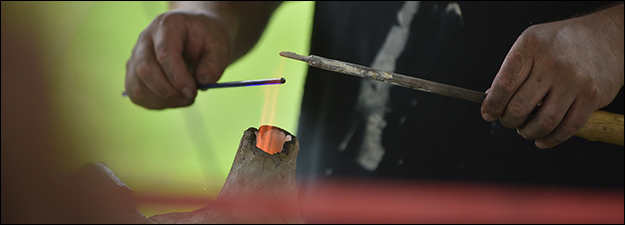Digital Skin: Sensory Experiences of Digital Manuscripts
Sponsoring Organization(s)
English Language, Univ. of Glasgow
Organizer Name
Johanna M. E. Green, Andrew Prescott
Organizer Affiliation
Univ. of Glasgow, Univ. of Glasgow
Presider Name
Johanna M. E. Green
Paper Title 1
Electric Ink
Presenter 1 Name
Andrew Prescott
Paper Title 2
The Book
Presenter 2 Name
Eduardo Kac
Presenter 2 Affiliation
School of the Art Institute of Chicago
Paper Title 3
Through a Glass Darkly, or, Rethinking Medieval Materiality: A Tale of Carpets, Screens, and Parchment.
Presenter 3 Name
Emma Cayley
Presenter 3 Affiliation
Univ. of Exeter
Paper Title 4
Respondent
Presenter 4 Name
Pamela M. King
Presenter 4 Affiliation
Univ. of Glasgow
Start Date
13-5-2016 10:00 AM
Session Location
Schneider 1130
Description
Much traditional scholarship discussing manuscript digitisation often focuses on the sense of 'material loss'; digital manuscripts may be viewed as 'poor surrogates', providing access at a cost, failing to provide the audience with the contextual and sensory experiences of the original (see Edwards 2012, inter alia). Among the textual distortions oft lamented, the absent sense of weight and size of a codex, the feel of the parchment between the fingers, the play of light over an illuminated initial, the sound or movement of the turning page, are all too often viewed negatively when a manuscript is transformed by technological intervention from analogue to digital. Increasingly, images of manuscripts are shared via social media, divorced from their manuscript surroundings and circulated in isolation, and they are frequently appropriated into other forms for entertainment, profit, as well as education, thus losing their sense of context (see, for example, recent discussions at UCL's symposium 'Getting the Word Out: Medieval Manuscripts Now'). Though emerging text technologies addressing the various distortions of text are being investigated internationally (e.g. NeDiMAH events, 2014-; Stanford's TexT Collegium 'Distortion', 2015, to name but a few), fresh scholarship (e.g. Houston, 2015) considers specifically the sensory gain offered by these digital transformations. Arguing that immersive technologies allow increased audience interaction and engagement with restricted manuscripts, such scholarship suggests that the latest digital developments no longer limit us to simply point, click or scroll: we can touch, tap, pinch, swipe, and rotate the digital object in ways simply not possible with the original codex, or twentieth century text technologies (e.g. microfilm, CD-ROMs, online digital editions). This panel, therefore, encourages discussion of the sensory gain brought about by advances in text technology that broaden our ability to see, touch, and even smell books in new, involved ways. Taking inspiration from existing technologies such as 3D imaging (e.g. St Chad Gospels), touch-technology (e.g. the Exeter Manuscripts Project), and even olfactory means of 'reading' (e.g. Eduardo Kac's 'Aromapoetry': http://www.ekac.org/aromapoetry.html), the panel poses the question: can digitisation and technological intervention increase and benefit our sensory experiences of medieval manuscripts within a new digital skin?
- Dr Johanna M. E. Green, English Language, University of Glasgow
Digital Skin: Sensory Experiences of Digital Manuscripts
Schneider 1130
Much traditional scholarship discussing manuscript digitisation often focuses on the sense of 'material loss'; digital manuscripts may be viewed as 'poor surrogates', providing access at a cost, failing to provide the audience with the contextual and sensory experiences of the original (see Edwards 2012, inter alia). Among the textual distortions oft lamented, the absent sense of weight and size of a codex, the feel of the parchment between the fingers, the play of light over an illuminated initial, the sound or movement of the turning page, are all too often viewed negatively when a manuscript is transformed by technological intervention from analogue to digital. Increasingly, images of manuscripts are shared via social media, divorced from their manuscript surroundings and circulated in isolation, and they are frequently appropriated into other forms for entertainment, profit, as well as education, thus losing their sense of context (see, for example, recent discussions at UCL's symposium 'Getting the Word Out: Medieval Manuscripts Now'). Though emerging text technologies addressing the various distortions of text are being investigated internationally (e.g. NeDiMAH events, 2014-; Stanford's TexT Collegium 'Distortion', 2015, to name but a few), fresh scholarship (e.g. Houston, 2015) considers specifically the sensory gain offered by these digital transformations. Arguing that immersive technologies allow increased audience interaction and engagement with restricted manuscripts, such scholarship suggests that the latest digital developments no longer limit us to simply point, click or scroll: we can touch, tap, pinch, swipe, and rotate the digital object in ways simply not possible with the original codex, or twentieth century text technologies (e.g. microfilm, CD-ROMs, online digital editions). This panel, therefore, encourages discussion of the sensory gain brought about by advances in text technology that broaden our ability to see, touch, and even smell books in new, involved ways. Taking inspiration from existing technologies such as 3D imaging (e.g. St Chad Gospels), touch-technology (e.g. the Exeter Manuscripts Project), and even olfactory means of 'reading' (e.g. Eduardo Kac's 'Aromapoetry': http://www.ekac.org/aromapoetry.html), the panel poses the question: can digitisation and technological intervention increase and benefit our sensory experiences of medieval manuscripts within a new digital skin?
- Dr Johanna M. E. Green, English Language, University of Glasgow

